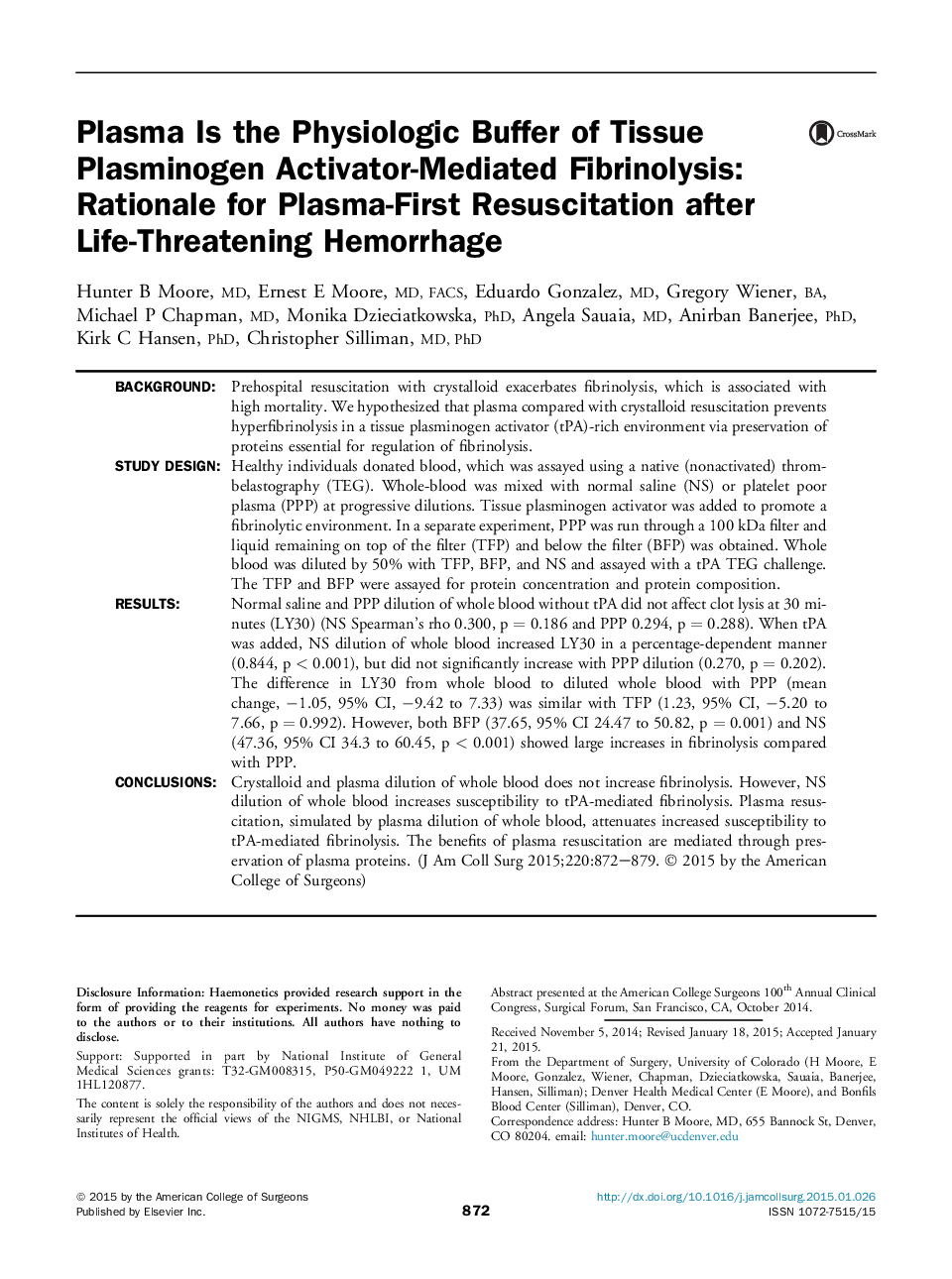| کد مقاله | کد نشریه | سال انتشار | مقاله انگلیسی | نسخه تمام متن |
|---|---|---|---|---|
| 4291265 | 1612220 | 2015 | 8 صفحه PDF | دانلود رایگان |
BackgroundPrehospital resuscitation with crystalloid exacerbates fibrinolysis, which is associated with high mortality. We hypothesized that plasma compared with crystalloid resuscitation prevents hyperfibrinolysis in a tissue plasminogen activator (tPA)-rich environment via preservation of proteins essential for regulation of fibrinolysis.Study DesignHealthy individuals donated blood, which was assayed using a native (nonactivated) thrombelastography (TEG). Whole-blood was mixed with normal saline (NS) or platelet poor plasma (PPP) at progressive dilutions. Tissue plasminogen activator was added to promote a fibrinolytic environment. In a separate experiment, PPP was run through a 100 kDa filter and liquid remaining on top of the filter (TFP) and below the filter (BFP) was obtained. Whole blood was diluted by 50% with TFP, BFP, and NS and assayed with a tPA TEG challenge. The TFP and BFP were assayed for protein concentration and protein composition.ResultsNormal saline and PPP dilution of whole blood without tPA did not affect clot lysis at 30 minutes (LY30) (NS Spearman's rho 0.300, p = 0.186 and PPP 0.294, p = 0.288). When tPA was added, NS dilution of whole blood increased LY30 in a percentage-dependent manner (0.844, p < 0.001), but did not significantly increase with PPP dilution (0.270, p = 0.202). The difference in LY30 from whole blood to diluted whole blood with PPP (mean change, −1.05, 95% CI, −9.42 to 7.33) was similar with TFP (1.23, 95% CI, −5.20 to 7.66, p = 0.992). However, both BFP (37.65, 95% CI 24.47 to 50.82, p = 0.001) and NS (47.36, 95% CI 34.3 to 60.45, p < 0.001) showed large increases in fibrinolysis compared with PPP.ConclusionsCrystalloid and plasma dilution of whole blood does not increase fibrinolysis. However, NS dilution of whole blood increases susceptibility to tPA-mediated fibrinolysis. Plasma resuscitation, simulated by plasma dilution of whole blood, attenuates increased susceptibility to tPA-mediated fibrinolysis. The benefits of plasma resuscitation are mediated through preservation of plasma proteins.
Journal: Journal of the American College of Surgeons - Volume 220, Issue 5, May 2015, Pages 872–879
